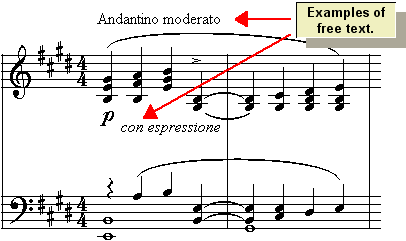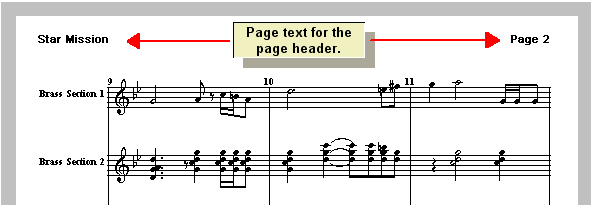|
<< Click to Display Table of Contents >> Editing Types of Text |
  
|
|
<< Click to Display Table of Contents >> Editing Types of Text |
  
|
Musician distinguishes between the following types of text, which have different roles in a score, and different methods for placement and formatting in the score:
Lyrics line up underneath the notes to which they belong. Musician supports an unlimited number of verses. The lyrics in each verse are centered underneath each corresponding sung note, such as illustrated here:

Free text can be freely placed anywhere within the body of the score. Examples of free text include tempo markings and expressive directives, such as illustrated here:

Page text appears at the header or footer of every printed page, or every left or right page, or just the first page of the score. Some common examples of page text are the song title and composer name on the first page, and page numbers displayed in headers or footers, such as illustrated here:

Chord names are displayed above the top staff of each system of the score. Musician offers an option to automatically analyze an imported MIDI file to determine and display chord names. You can edit chord names just as you do other text, except some special characters such as "b" and "#" are interpreted as flat and sharp. Here are some examples of chord names:
 |  |
Rehearsal marks help to quickly direct ensemble musicians to important locations in the score during their practice sessions. In Musician, rehearsal marks can similarly be used to define the start and end locations of practice loop sessions, in which you can sing or practice your solo instrument while reading notes from the screen with accompaniment from Musician. Rehearsal marks are always presented in boxes. You can enter any number of letters or numbers for the rehearsal mark text. In this example, an upper-case letter is used:
